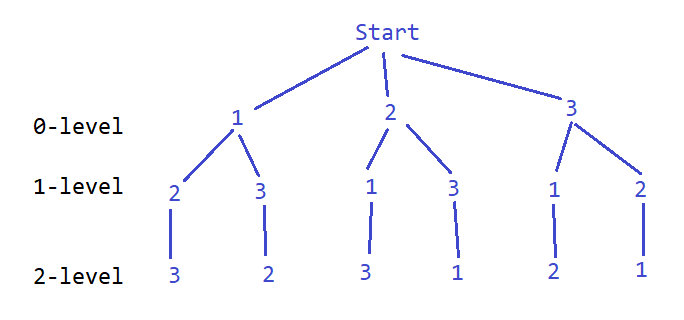Given an array nums of distinct integers, return all the possible permutations. You can return the answer in any order.
示例 1:
Input: nums = [1,2,3]Output: [[1,2,3],[1,3,2],[2,1,3],[2,3,1],[3,1,2],[3,2,1]]
示例 2:
Input: nums = [0,1]Output: [[0,1],[1,0]]
示例 3:
Input: nums = [1]Output: [[1]]
提示:
- 1 ≤
nums.length≤ 6 - -10 ≤
nums[i]≤ 10 - All the integers of
numsare unique.
思路
本题可构建一棵树,如下图所示:
采用一次DFS即可得到答案。
DFS是基于递归,本题的终止条件是:当前层数等于输入列表的长度时,终止递归。
代码
class Solution {public:void dfs(vector<int>& nums, vector< vector<int> >& ans, int level, bool visited[], vector<int>& path) {// 1. Exit conditionif( nums.size() == level ) {ans.push_back( path );return;}// 2. Walk every node that not visitedfor(int i = 0; i < nums.size(); i++) {int node = nums[i];if( !visited[i] ) {visited[i] = true;path.push_back( node );dfs(nums, ans, level+1, visited, path);path.pop_back();visited[i] = false;}}}vector<vector<int>> permute(vector<int>& nums) {vector< vector<int> > answer;if( nums.size() == 0 ) return answer;if( nums.size() == 1 ) {answer.push_back(nums);return answer;}bool visited[ nums.size() ];for(int i = 0; i < nums.size(); i++)visited[i] = false;vector<int> path;dfs( nums, answer, 0, visited, path );return answer;}};

